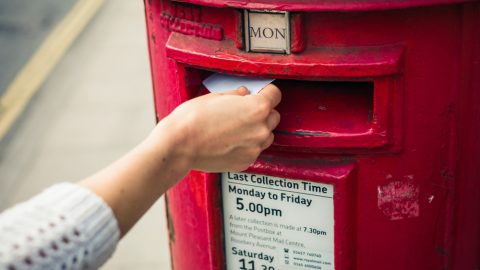Royal Mail History – If you were asked to imagine a postman from the early days of Royal Mail, how would you describe them? Perhaps holding a large sack, collecting letters from the traditional red post boxes? Maybe travelling the dark and musty underground trains of old beneath London? Steeped in tradition perhaps unsurprisingly the roots of the Royal Mail can be found as early as 1516. At this time Henry VIII established a ‘Master of the Posts’. Thereafter a posting service for the public was launched by Charles I in 1635.
The famous Penny Black of 1839 was the first adhesive pre-paid postage stamp. Britain was the first country to issue pre-paid postage stamps. Uniquely, for this reason British stamps are the only stamps in the world not bearing the country of issue on them.
The first distinctive red pillar box appeared in Jersey in 1852. However the Royal Mail which we know today really took shape in the 1960’s. It was then that Second Class stamps were introduced. More significantly, the Royal Mail changed from a department of the government to a statutory corporation. This was as per the Post Office Act of 1969.
Only five years later, in 1974, the national system of postcodes had been fully rolled out across Great Britain. First introduced in Norwich in 1957, full postcodes follow a fixed format, and are comprised of outward and inward codes. The codes specify the district and street which the mail is sent to. Up until its abolition in 2003, the London Post Office Railway was instrumental in this sorting and delivery process. The 1927 network consisted of driverless trains, which ran on a private track underneath London between sorting offices. Now replaced by vans, lorries and bicycles, Royal Mail transport is still painted in trademark bright red.
By the year 1981, the General Post Office had been split into two separate divisions; British Telecom which dealt with telecommunications, and the Post Office that delivered standard mail. The 1980’s also brought about optical character recognition technology, still used to read addresses today. This plus barcoding (CBC) enables Royal Mail to mechanically sort hundreds of thousands of letters every day.
With the turn of the millennium, Royal Mail received a short-lived rebranding as Consignia plc. This change wasn’t as popular as was expected and the company soon became Royal Mail Group plc.
On 1 January 2006, the Royal Mail lost its centuries of monopoly and the British postal market opened to competition. Competitors can now collect and sort mail and pass it to Royal Mail for delivery, a service known as Downstream access (DSA). In the same year Royal Mail introduced Pricing in Proportion (PiP) for first and second class inland mail. This heralded a major change to the pricing structure whereby item prices are affected by dimensions as well as weight.
Another big change came with the listing of Royal Mail onto the London Stock Exchange on 15 October 2013.
Throughout the early twenty-first century Royal Mail has embraced rapidly advancing technology. The Heathrow Worldwide Distribution Centre, exemplifies the auto-sorting of mail to dispatch via AirMail or road. In this techno world Royal Mail trailblazes state of the art technology for the sorting, tracking and delivering of mail.
New in 2014 Mailmark™ (formerly known as Enterprise Intelligent Barcode® or EIB®) combines a new barcode with innovative optical technology and digital performance reporting. Mailmark™ can tell customers where a mail consignment is in the network, when it’s scheduled to arrive and how well it performs.
It’s reassuring to know that despite the rapid growth of clever technology, it’s still possible to spot the everyday postman or postwoman. Doing their rounds on a bright red lorry, van, bicycle or even on foot, but for how long? That’s the Royal Mail History for you. What about Royal Mail Future?
For a bright future for your mail project call us on 0208 946 1234.































